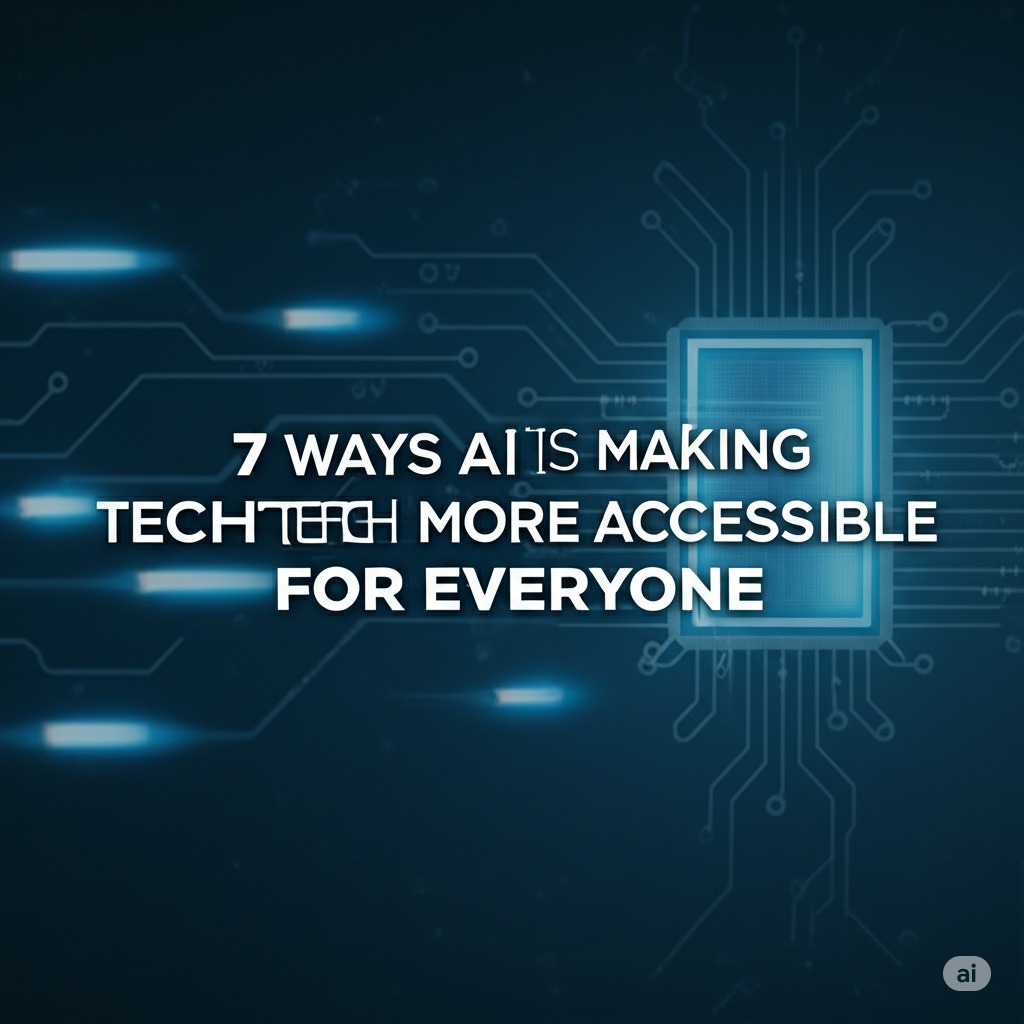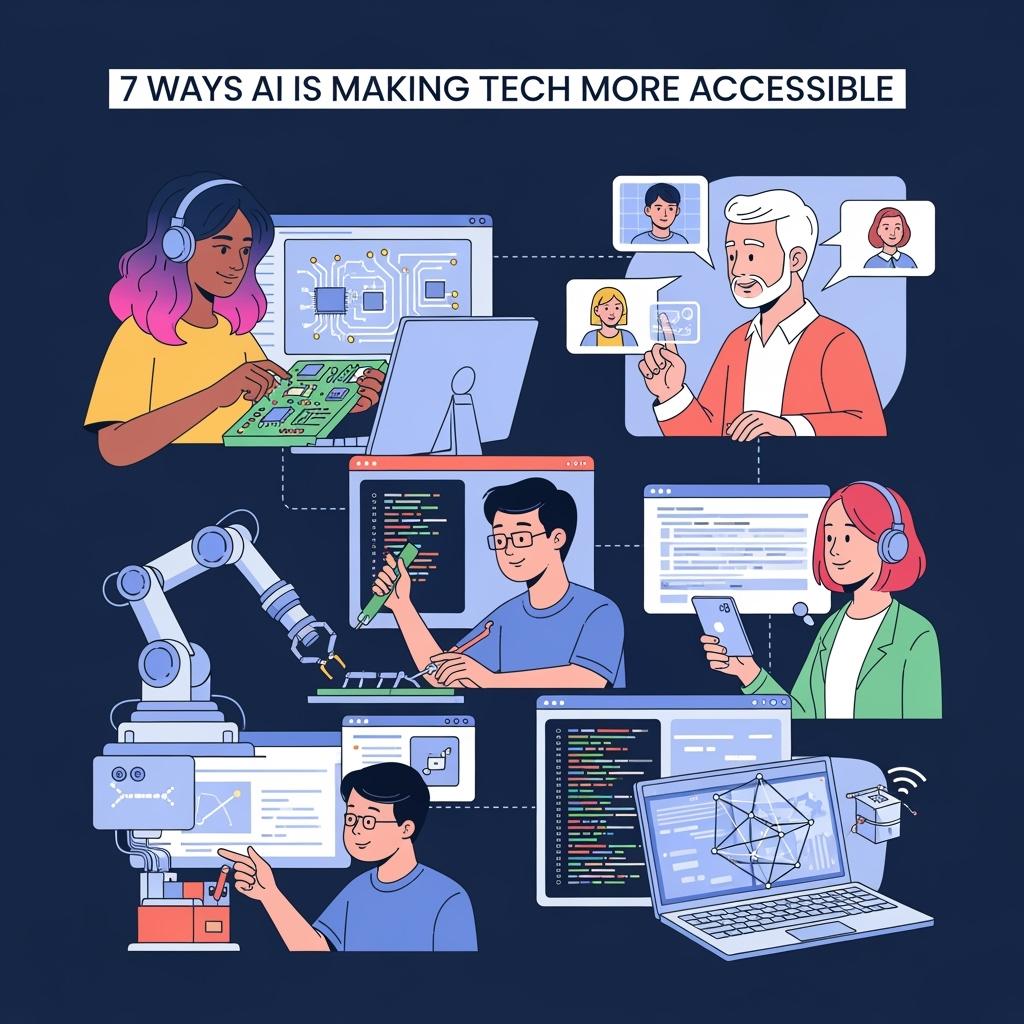Introduction
In the contemporary, rapidly evolving environment, technology is essential to our everyday existence. The focus keyword, 7 Ways AI is Making Tech More Accessible for Everyone, highlights the transformative impact of artificial intelligence on technology. AI is not just a buzzword; it is reshaping how we interact with devices, making them more user-friendly and inclusive. From enhancing user interfaces to providing personalized experiences, the 7 Ways AI is Making Tech More Accessible for Everyone showcases the potential of AI to bridge gaps and empower individuals. As we explore these seven ways, you’ll see how AI is paving the way for a more inclusive tech landscape, ensuring that everyone can benefit from the advancements in technology.
Enhanced User Interfaces
AI-driven user interfaces adapt to individual preferences, making technology easier to navigate. These interfaces learn from user behavior, allowing for a more intuitive experience. For example, artificial intelligence has the capability to examine user interactions with applications and websites, modifying layouts and functionalities to better meet their requirements. This personalization helps users feel more comfortable and confident when using technology.
Personalized Learning Experiences
Education technology has seen significant improvements thanks to AI. Personalized learning platforms use AI algorithms to tailor educational content to each student’s learning style and pace. This approach ensures that learners receive the support they need, making education more accessible for everyone, regardless of their background or abilities.
Voice Recognition Technology
Voice recognition technology has changed how we interact with devices. AI-driven voice assistants, such as Siri and Alexa, enable users to operate their devices without the need for physical interaction. This feature is particularly beneficial for individuals with mobility challenges, enabling them to access information and perform tasks without physical interaction. As voice recognition continues to improve, it becomes an essential tool for enhancing accessibility.
Smart Assistive Devices
AI has led to the development of smart assistive devices that cater to individuals with disabilities. These devices, such as smart wheelchairs and hearing aids, utilize AI to enhance functionality and user experience. For example, smart wheelchairs can navigate obstacles autonomously, while AI-driven hearing aids can adjust sound levels based on the environment. These innovations empower users to lead more independent lives.
AI-Powered Translation Services
Language barriers can hinder communication and access to information. AI-powered translation services, like Google Translate, break down these barriers by providing real-time translations. This technology allows users from different linguistic backgrounds to connect and share information seamlessly. As AI continues to evolve, translation services will become even more accurate and accessible.
Improved Accessibility Features
Many tech companies are prioritizing accessibility in their products. AI plays a vital role in enhancing accessibility features, such as screen readers and text-to-speech applications. These tools help individuals with visual impairments access digital content more easily. By integrating AI into these features, companies ensure that technology is inclusive and usable for everyone.
Conclusion
The 7 Ways AI is Making Tech More Accessible for Everyone illustrates the profound impact of artificial intelligence on technology. From enhancing user interfaces to developing smart assistive devices, AI is breaking down barriers and creating a more inclusive digital landscape. As we continue to embrace these advancements, we can look forward to a future where technology is accessible to all.
Recommendation
To make the most of AI’s potential in enhancing accessibility, consider exploring various tools and applications that cater to your specific needs. Whether you’re a student seeking personalized learning experiences or someone looking for assistive devices, there are numerous resources available. Stay informed about the latest AI developments and engage with communities that focus on accessibility in technology. By doing so, you can contribute to a more inclusive tech environment for everyone.
Frequently Asked Questions
1. How does AI improve accessibility in technology?
A1: Enhances accessibility by personalizing user experiences, developing smart assistive devices, and improving communication through translation services.
2. What are some examples of AI-powered assistive devices?
A2: Examples include smart wheelchairs that navigate autonomously and hearing aids that adjust sound levels based on the environment.
3. Can AI help with personalized learning?
A3: Indeed, artificial intelligence has the capability to customize educational materials according to the unique learning preferences and speeds of each student, thereby enhancing accessibility to education for all individuals.



